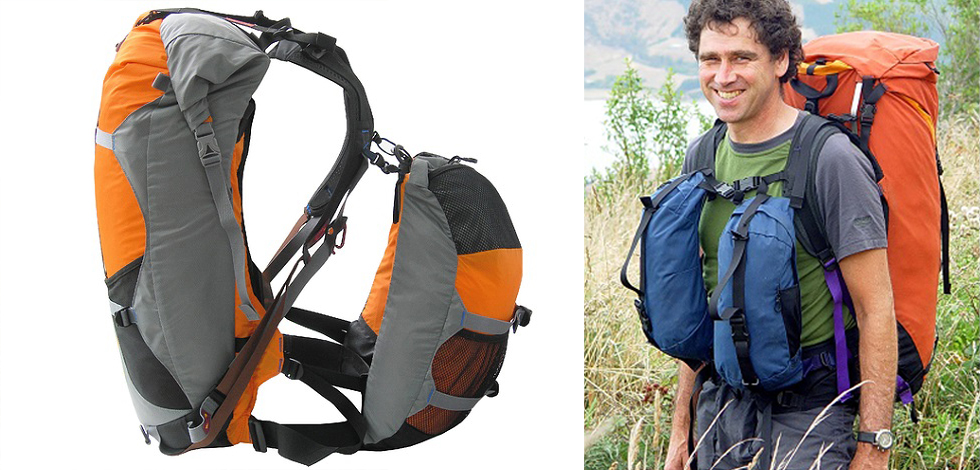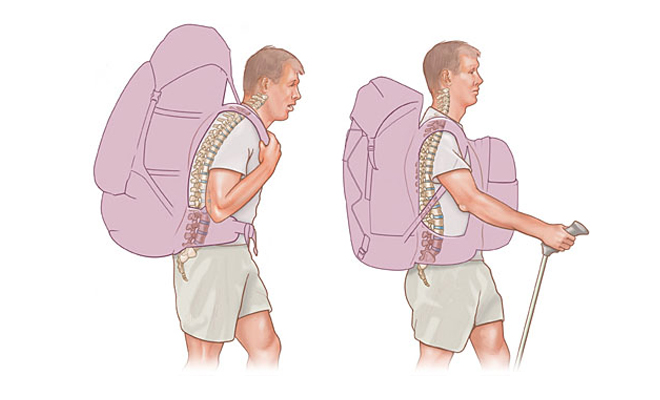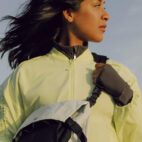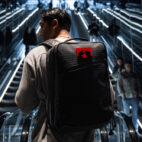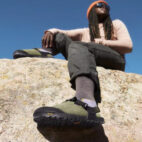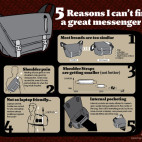Carryology delivered. Your inbox. every two weeks.
Only the best stuff (and giveaways!), we promise.
Bodypacks :: Interview with Aarn Tate
Look at a backpacker side on, and it becomes obvious that something is wrong. We humans evolved to stand upright, and yet when we go to carry a heavy load, we most typically lump the whole load onto our back, forcing ourselves into a stooped position to try and find balance.
For the last two and a half decades, Aarn Tate has been studying and refining a better way to carry. His body-centred load carry systems maintain our upright posture even when burdened with a load. They reduce effort and fatigue, allow for freer movement, and give better load access on the go. And after a hugely enjoyable Skype with this New Zealand based innovator, we can share some of his insights and learnings below…
.
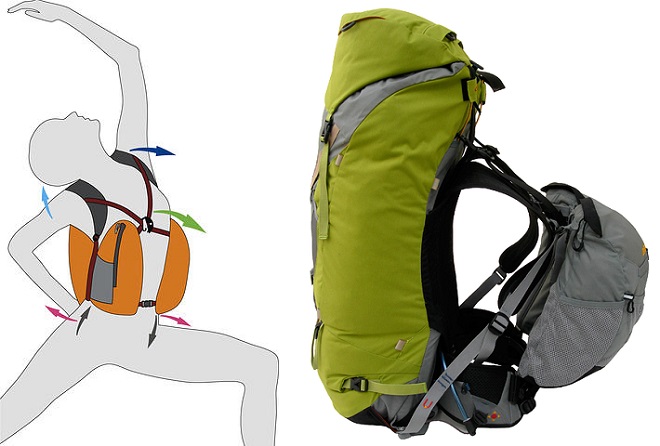
.
Some background
Aarn has been innovating in the outdoor industry for decades. An avid skier, walker and climber, he was drawn to pack and tent design early on, and has since freelanced for several brands around the world. In the late 80’s, he started experimenting with the front carry pockets that have come to define his balanced load approach, before finally starting his own brand in the early 2000’s.
.
So what is body-centred load carrying? This is where the centre of mass of your load perfectly matches the centre of mass of your body, both horizontally and vertically. So as you walk, turn, pivot or step, the load moves reasonably intuitively, rather than like a piggy-backing gremlin with a mind of its own.
.
The major ways to carry
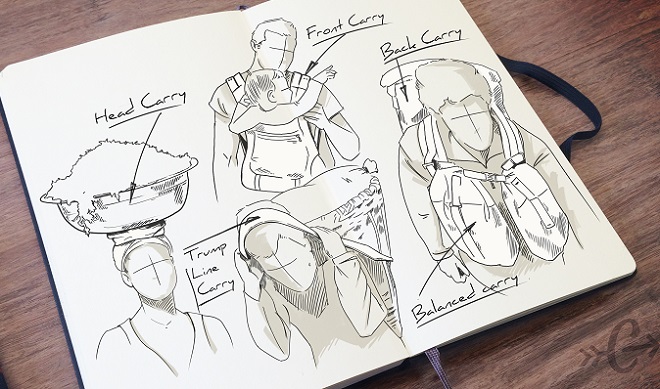
Head carry
The typical image for head carry is of African women carrying water and food along a flat road. And they can be amazing at it. They can carry 1/5th of their weight with very little extra energy expended, or if pushed, some are able to carry 70% of their own body weight. The downside? It’s really unstable, which means it’s impractical for uneven terrain, high winds, or during dynamic movements. Oh, and it takes serious practice.
Trump line carry
For this, you should be thinking of Nepalese porters hauling gear up Everest, with a sling running from their forehead down around a load and back up again. The best of these porters can carry loads up to 200% of their body weight for several days in high altitude. So why isn’t Aarn recommending Trump lines? You basically have to grow up using these, as specialist muscles and techniques are required to not do serious damage. And you need to rest often. And it’s hard to enjoy the view.
Front carry
Either beer bellies or BabyBjörns with your newborn are probably coming to mind. And as a father of two well-sized kids, I can safely say that this only works up to a certain weight before you start straining and tripping all too regularly (I’m not sure what the beer belly feels like, but we’re up for hearing in the comments field). Fisher-folk are another breed to have found benefits in front carry. In this situation, it is mostly about easier access, with complex pockets across the front.
Back carry
By far the most common in first world carry; this can either be hung over the shoulders like Goruck encourage, or propped up on our hips like most trekking packs encourage. It’s quick enough to get loads on and off, and for lighter loads you don’t really notice it. But as the load increases, things start to get awkward.
Balanced carry
Aarn is not the only person to have played with balanced carry, although his ideas have pushed it further than most. In military situations, lots of armed forces carry armour, ammo and weapons in a fairly balanced way. For most of these though, lots of the weight still hangs from the shoulders rather than innovative ways to prop it up from the hips.
.
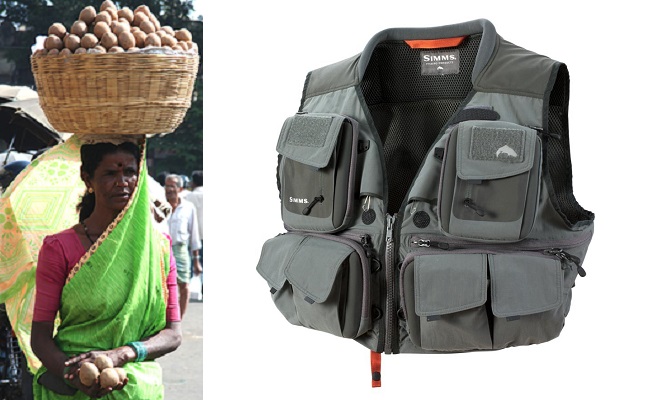
Developing the Aarn brand
The freelance years
Aarn‘s first design experience was in the 1970’s with Australian retailer (and back then also a maker) Paddy Pallin. From there, he designed in NZ, the UK, Japan and the US, including solid stints with Vango and Craghoppers (Ed note: As a youth, Ando spent many nights under an Aarn-designed Vango tent in Victoria’s high country). Craghoppers was a great experience, with the brand growing quickly and caring about the details (including some of the most detailed spec’s Aarn has experienced). The brand was getting awesome press around that time, but then Foot & Mouth disease hit British cows, farms were quarantined, and the UK walking scene (which relies on crossing over farms) was smashed. Aarn and Devi returned to New Zealand, and soon after started Aarn the brand.
.
The first balance pockets
Aarn‘s first front pocket designs were seeded while he was still freelancing, and first tested on a 3-month traverse of the southern Alps in NZ in 1989. It was true self-experimentation, and witnessing the obvious benefits, Aarn‘s walking companion became ever more jealous as the trek progressed. So subjectively they knew the balanced load approach was working, but Aarn needed a more objective review to start convincing others.
.
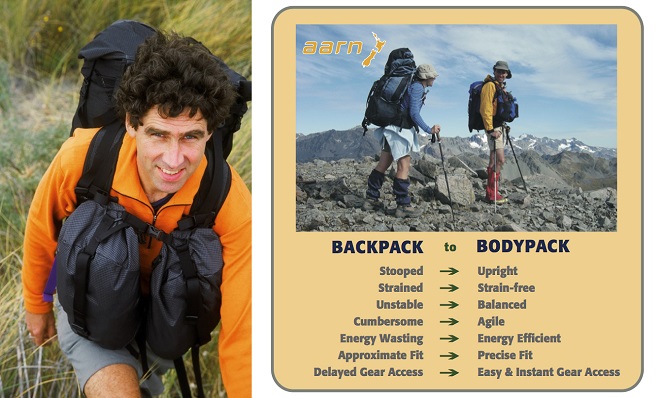
.
Ray’s research
The biomechanics research of Professor Ray Lloyd has been instrumental in helping understand why Aarn‘s body-centred designs work. For any pack designers or core carry nuts, we thoroughly recommend reading Aarn‘s summary of it. While Aarn was living in the UK, Ray did this year-long research from the Leeds Metropolitan University.
–
Note: More recent studies by Professor Ray Lloyd on head supported load carrying have called into question the results of the original study that showed 20% of body weight could be carried with no extra energy used. Only a few women could achieve smaller energy savings than this on level ground with a particular energy saving gait, other women used significantly more energy than these women. So it is not accurate to quote the 20% figure now.
.
Aarn today
The modern Bodypack
Floating carry – The modern front pockets ‘float’ above the waist belt, standing up from it rather than hanging from the shoulder straps. This is achieved by a sliding attachment to the straps, and a stay for the pocket.
.
Hip anchoring – The rear pack’s weight is guided to the sides of your hip belt, rather than into the back of your hip belt. This creates a better load connection. Interestingly Mystery Ranch have started exploring similar ideas about weight transfer to the hips, as with their new Rush, Swift and Big Mountain packs.
.
Modular and diverse – Aarn now has many configurations for many activities, allowing specialist carry for all sorts of needs.
.
.
The business of Aarn
Aarn Design is just a tiny business, with Aarn and his partner Devi controlling it from their small place. There were many years of struggling with suppliers, as large factories would ignore them, and small factories just didn’t have the skill. But after having tried too many makers to mention, they now have a great Vietnam-based bag maker. Minimum Order Quantities remain a challenge, but their growth is helping make that less so.
.
While Aarn and Devi distribute to retailers themselves in New Zealand, they partner for other regions. Some star regions so far are Japan and Switzerland, with Norway also recently starting to get real traction. They hope to find other great distributors to build awareness for the brand in new regions.
.
What’s next?
From the sounds of it, lots. Aarn‘s main focus now is on lightening and simplifying, but he’s also designing lots of other carry pieces around his concept. Most new products are initiated by folks who can’t find anything suitable, and so there are some interesting school bags, travel bags, and all sorts of other products in the works. Aarn also mentioned the constant learning he gains by looking at the detailing and finishing of other great carry brands.
.
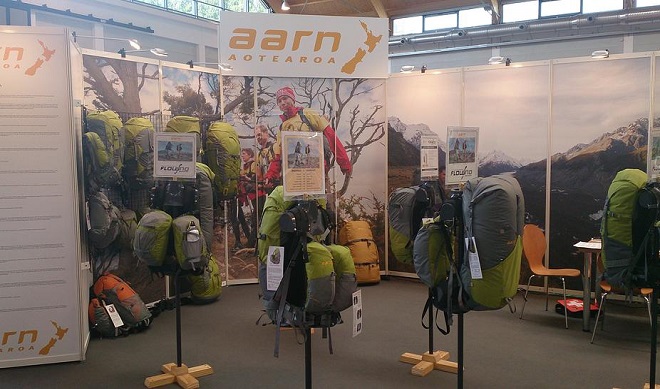
.
Who will benefit from Aarn
Who they particularly suit
Folks who will get some of the biggest benefits from body-centred carry are long-distance trekkers (efficient and comfortable), adventure photographers (excellent access on the go), and shorter folk (it’s a leverage thing).
.
If you carry a child for long distances, you’ll love these.
.
Apparently many post-operative folks also report significant benefits, including patients of mastectomies and pace-makers. And there’s also a strong argument for backcountry skiers and snowboarders, where typical larger packs have their own momentum when turning, destabilising your turns.
.
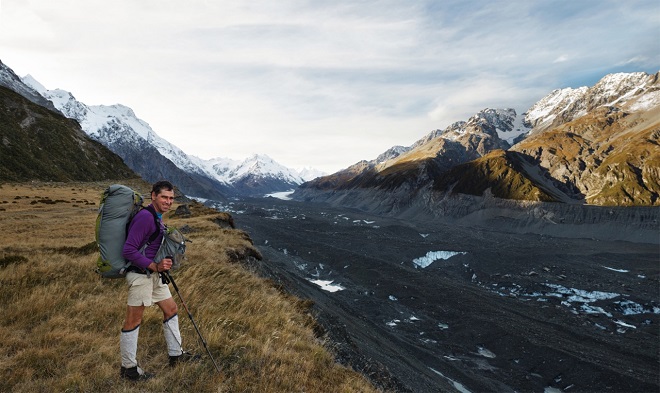
.
Who they don’t suit quite as well
If you are fitting and removing your load or clothing frequently, entry and egress does take a touch longer. Note though, with pockets on the front you should need to remove your pack less often.
.
If you’re in very hot climates, despite the front packs being designed with minimal body contact and ventilation, you will still feel the increase in volume around you.
.
If you don’t like getting your head around new systems, or you don’t want to explain innovative systems to interested folks you meet, then go with something more conservative.
.
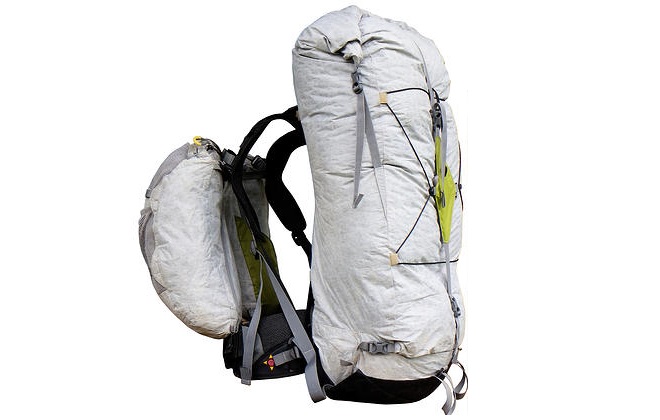
.#





 Carry Awards
Carry Awards Insights
Insights Liking
Liking Projects
Projects Interviews
Interviews
